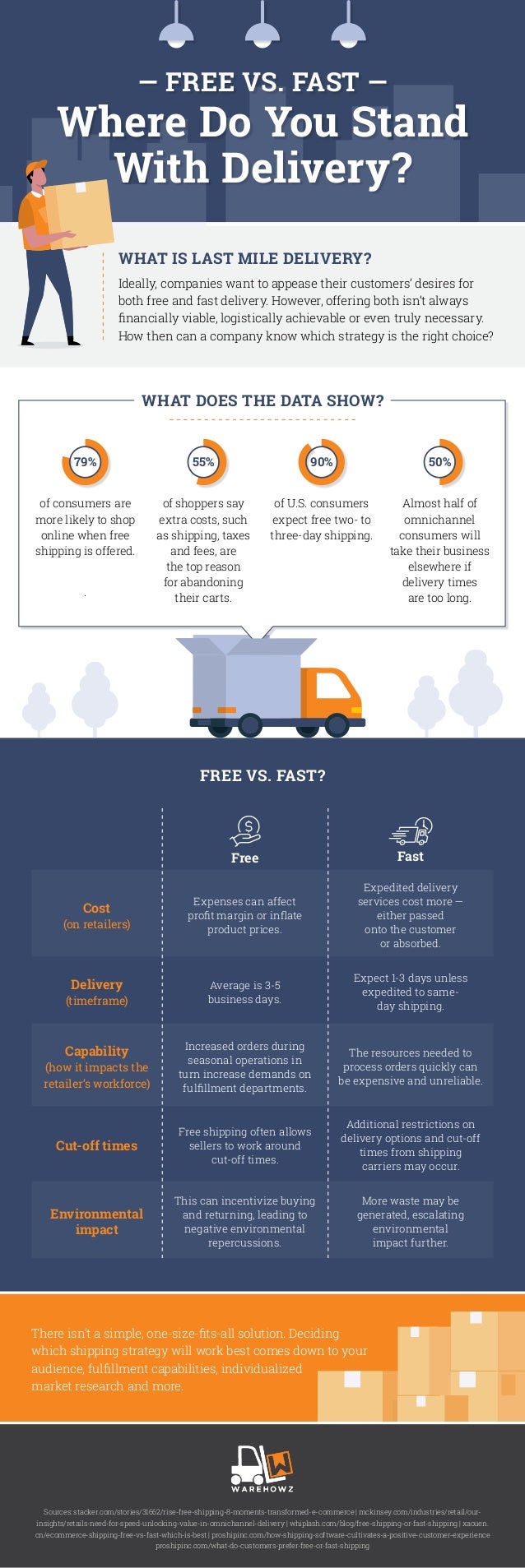The capabilities to fulfill an order and deliver it quickly have developed immensely in recent years. As a result, consumer expectations for a speedy turnaround on orders and delivery have also increased dramatically. To disrupt matters further, these e-commerce customers expect to receive their packages for free. How might small companies keep up with these consumer demands and still remain profitable? Generally speaking, it’s advised to meet the baseline requirements of the specific market. Creating an advantageous shipping strategy requires a personalized look into an organization’s particular capabilities and the needs of its target audience. Most consumers nowadays expect free shipping in a two- to three-day timeframe. Smaller businesses have to compensate how they can, whether this is free shipping but with extended delivery or adjusted costs for fast conveyance, adjustments are necessary as small businesses can’t match the fulfillment output of a company like Amazon. As the e-commerce and order fulfillment industry continues to rapidly evolve, businesses of all sizes are going to be faced with new challenges. Whether they are shaped by consumer trends or created by industry-leading giants, the trials ahead could make or break a company. The key to success is to look at these impending issues from an individualized standpoint rather than follow potentially ineffectual options for the sake of imitation. For more information on how to do so, check out the infographic supported alongside this post.
Free vs. Fast: Where Do You Stand With Delivery? presented by WAREHOWZ, an organization offering storage warehouse for rent
















